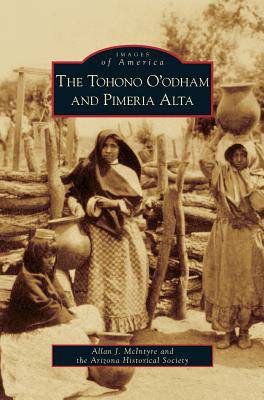
- Afhalen na 1 uur in een winkel met voorraad
- Gratis thuislevering in België vanaf € 30
- Ruim aanbod met 7 miljoen producten
- Afhalen na 1 uur in een winkel met voorraad
- Gratis thuislevering in België vanaf € 30
- Ruim aanbod met 7 miljoen producten
Zoeken
€ 44,45
+ 88 punten
Omschrijving
The Tohono O'odham have lived in southern Arizona's Sonoran Desert for millennia. Formerly known as the Papago, the people, acting as a nation in 1986, voted to change the colonial applied name, Papago, to their true name, Tohono O'odham, a name literally meaning "desert people." Living within a region the Spanish termed Pimeria Alta, the Tohono O'odham, from the time of Spanish Jesuit Kino's first missionary efforts in the late 1680s, have been witness to numerous governmental, philosophical, and religious intrusions. Yet throughout, they have adapted and survived. Today the Tohono O'odham Nation occupies the second largest land reserve in the United States, covering more than 2.8 million acres. The images in this volume date largely between 1870 and 1950, a period that documents great change in Tohono O'odham traditions, culture, and identity.
Specificaties
Betrokkenen
- Auteur(s):
- Uitgeverij:
Inhoud
- Aantal bladzijden:
- 130
- Taal:
- Engels
Eigenschappen
- Productcode (EAN):
- 9781531635947
- Verschijningsdatum:
- 2/04/2008
- Uitvoering:
- Hardcover
- Formaat:
- Genaaid
- Afmetingen:
- 170 mm x 244 mm
- Gewicht:
- 412 g

Alleen bij Standaard Boekhandel
+ 88 punten op je klantenkaart van Standaard Boekhandel
Beoordelingen
We publiceren alleen reviews die voldoen aan de voorwaarden voor reviews. Bekijk onze voorwaarden voor reviews.











